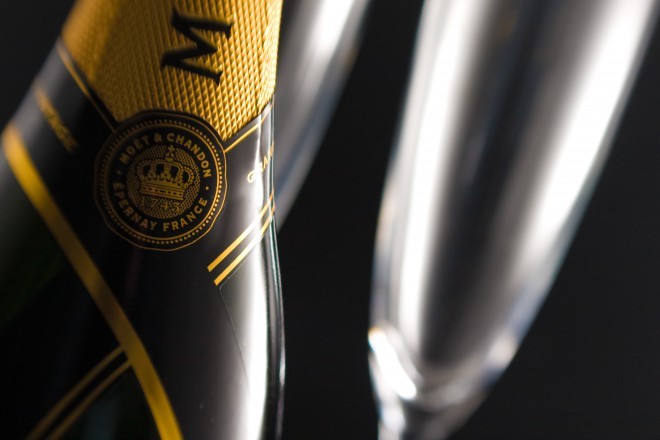We all know a Burgundian, but where is Burgundy? And most of us enter the first hours of the New Year with champagne, but where is the Champagne region?!
The cradle of Champagne and the only region in the world that produces the original white sparkling wine, it is located about 160 kilometers northeast of Paris.
Reims – the city of crowned heads
In the north-east of France and in the north of the wine-growing world of Europe, along the border with Belgium, lies the Champagne-Ardennes region. The French capital Paris and the historically most important city of Champagne, Reims, are only a 45-minute ride away on the super-fast TGV train. Although the main administrative city of the Châlonsen Champagne region, with almost 200,000 inhabitants, it is the most important city in the Reims region. Even more than the Roman remains, visitors are attracted by the beautiful Gothic Notre Dame Cathedral, which, together with the Abbey of St. Remy and the Archbishop's Palace of Tau, was included in the UNESCO World Heritage List in 1991, and where most of the French kings were crowned. If there were a list of the most beautiful Gothic cathedrals, Reims Cathedral, with countless angels and saints carved into the stone portals and arches and breathtaking stained glass windows - some of them painted by Marc Chagall - would very likely be right at the top of the list. In addition to the architectural landmarks and important historical events that took place in Reims (among other things, General Eisenhower received the unconditional surrender of the Wehrmacht in the city on May 7, 1945), the city is an excellent starting point for learning the art of producing the favorite bubbly drink - champagne. Viticulture in Champagne has roots dating back more than two millennia. From Roman times to the 16th century, the wine range was limited mainly to the production of red wines, and it was only at the end of the 17th century that winegrowers began to successfully exploit the natural tendency of Champagne wines to become sparkling. The growing popularity of champagne and its bubbles has fostered the establishment and prosperity of many champagne houses across the region. Some of the most renowned still exist today, and both large and small producers will be happy to open their cellar doors to us and discover how they make their legendary wines.

On the hunt for the best champagne
Cathedrals, abbeys and basilicas are merely side attractions for most pilgrims of hedonism. The reason for their pilgrimage to Reims and its surroundings is the shops around the cathedral. Many of the wooden crates displayed in them do not contain relics, but for true wine lovers they are much more valuable: bottles of archival champagne of big names that we often hear or see, and a lot of smaller producers that we have not heard of and should. The area with vineyards that have the right to use the name champagne consists of several different villages, each with its own peculiarities and characteristics. At harvest time, following a centuries-old tradition, some Champagne houses choose the villages and grape varieties to use for their wine. The house selection – the cuvée represents a carefully selected variety, a delicate balance of its quantity and a perennial quality that sets it apart from other brands. The global fame of a certain brand is a recognition of a champagne house that respects traditional production processes, but of course also provides the special characteristics expected of every producer. In the very center of the city, you can get to know the offer of the most famous houses, also called grandes marques, such as Pommery and Tattinger. Ruinart is the oldest champagne house, founded in 1729. Although the invention of champagne is attributed to the Benedictine monk Dom Pérignon, who lived in the early 18th century, the champagne named after him has been produced by the champagne house Möet et Chandon only since 1936. The relative obscurity of the Ruinart champagne house the owners apparently don't mind. When Victoria Beckham, then still Posh Spice, requested that the bottle of Ruinart champagne delivered to her hotel room in London be replaced with a bottle of Cristal, Ruinart was clearly pleased. Although they don't hide their elitism, they open the doors of their beautiful 18th-century mansion to visitors every day of the year with advance notice and take them through the wine cellars carved into the chalk. Just a few tens of kilometers southeast of the Ruinart vineyards, winding roads lead to the estates of small growers who produce champagne from their own grapes (not like the grandes marques, who buy most of the grapes) and produce between 10,000 and 20,000 bottles of their own, high-quality champagne annually. Since most of the 15,000 small winegrowers sell their grapes to the big champagne houses, only about 4,000 of them produce their own champagne, meaning that about 70 percent of champagne production is in the hands of the big champagne houses. One of the smaller producers who is becoming a star in the world of intoxicating bubbles is Didier Gimonnet, who runs the champagne house Pierre Gimonnet & Fils in collaboration with his brother. Although the Gimonnets have been winegrowers for centuries, Didier's grandfather, Pierre, started winemaking in the 1930s. Like most winegrowers, the Gimonnet family lives in a small village called Cuis, where wine production is the main source of income. If we visit Champagne, we must not leave it without visiting three famous champagne houses: Mumm, Perrier Jouet and Krug. The former was considered the official champagne of the Formula 1 races, while the latter is considered a real lady among champagnes - especially known for the legendary Belle Epoque bottle.

Champagne forever
The Gimonnet family and other smaller producers, such as Champagne Egly-Ouriet, Chartogne-Taillet Champagne and Vilmart & Cie, do not need to fear for survival. Despite the efforts of the champagne houses to satisfy global demand with the approximately 330 million bottles they fill annually in the region, they cannot produce enough sparkling wine, so this year the French Institute for Quality Control and Origin (INAO) confirmed that, in addition to the previous 327 wine-growing villages, 40 more villages join the Champagne wine-growing area. Despite the fact that the new vineyards will bear fruit only in a few years, there is no fear for the future of white sparkling wine, because we cannot imagine moments of happiness, good wishes and pampering without a glass of champagne. And because we all want such moments - cheers!
More information at:
www.reims-tourisme.com
www.chalons-en-champagne.net
www.chalons-tourisme.com






